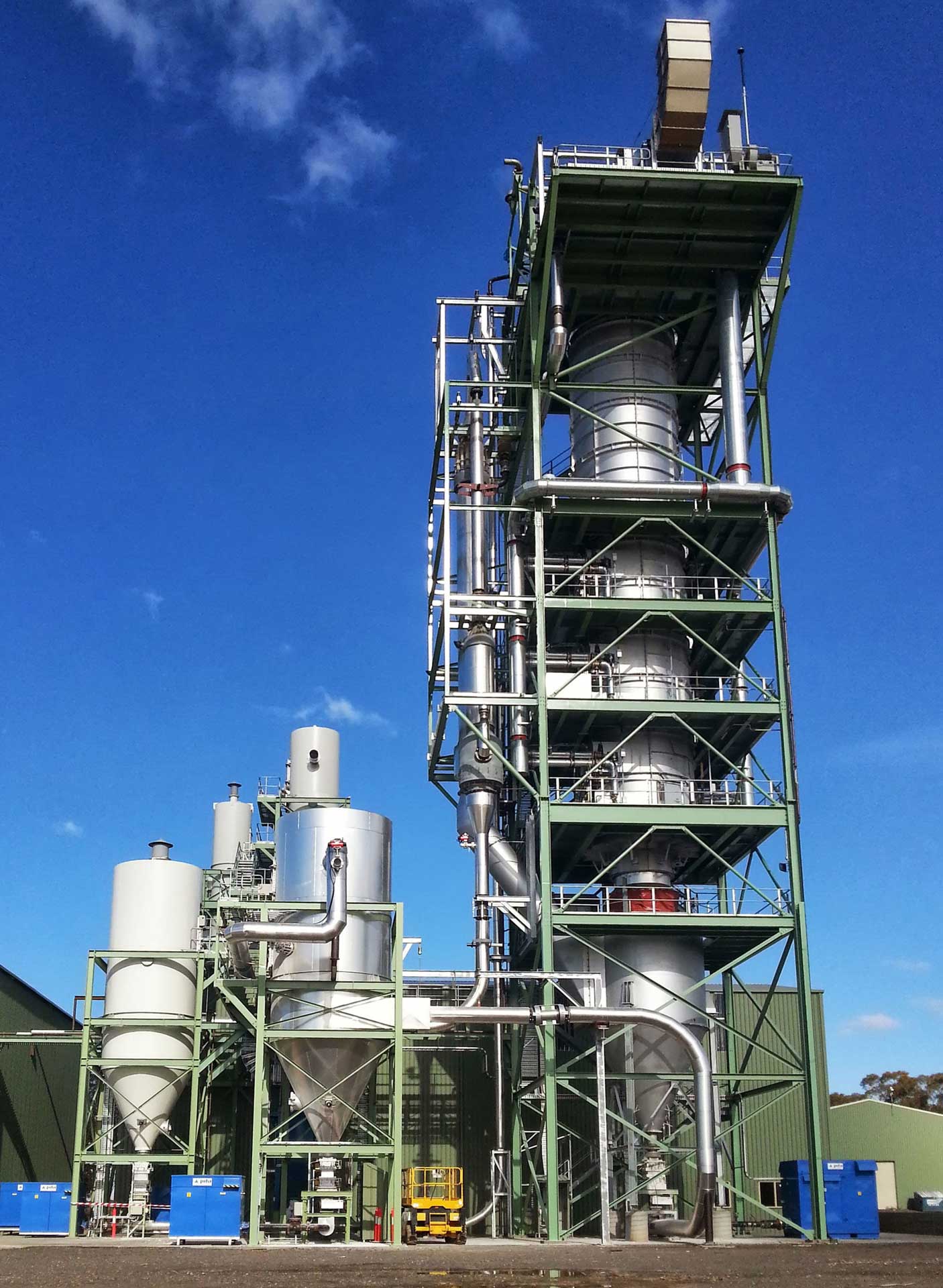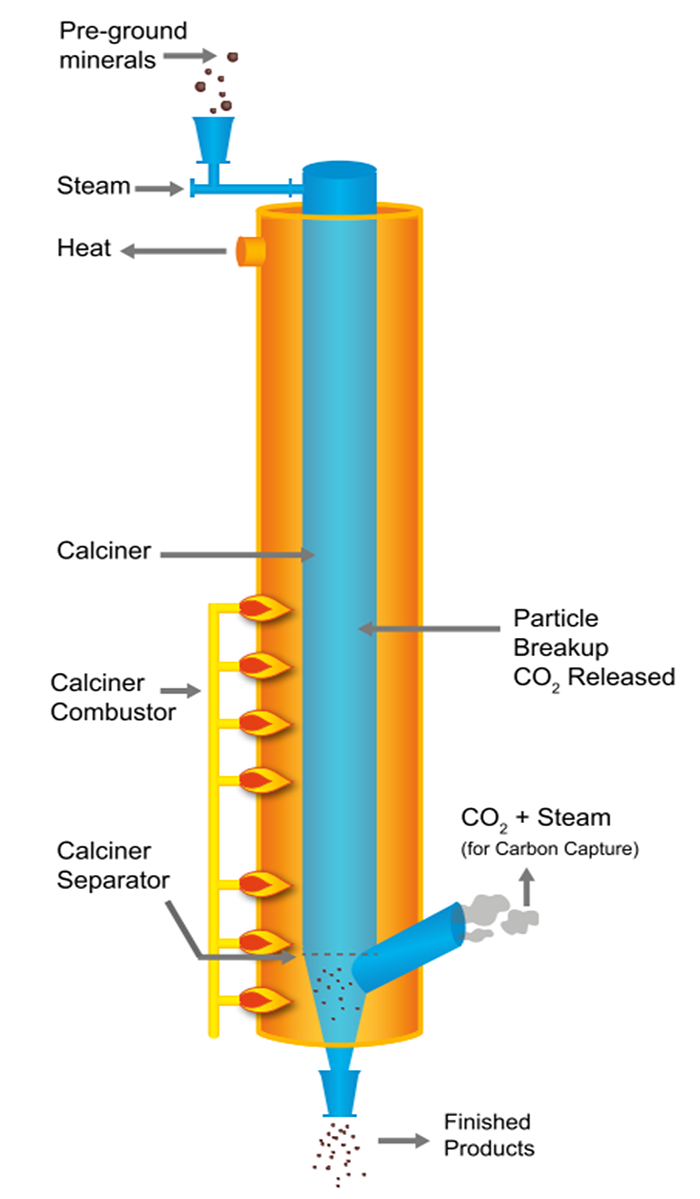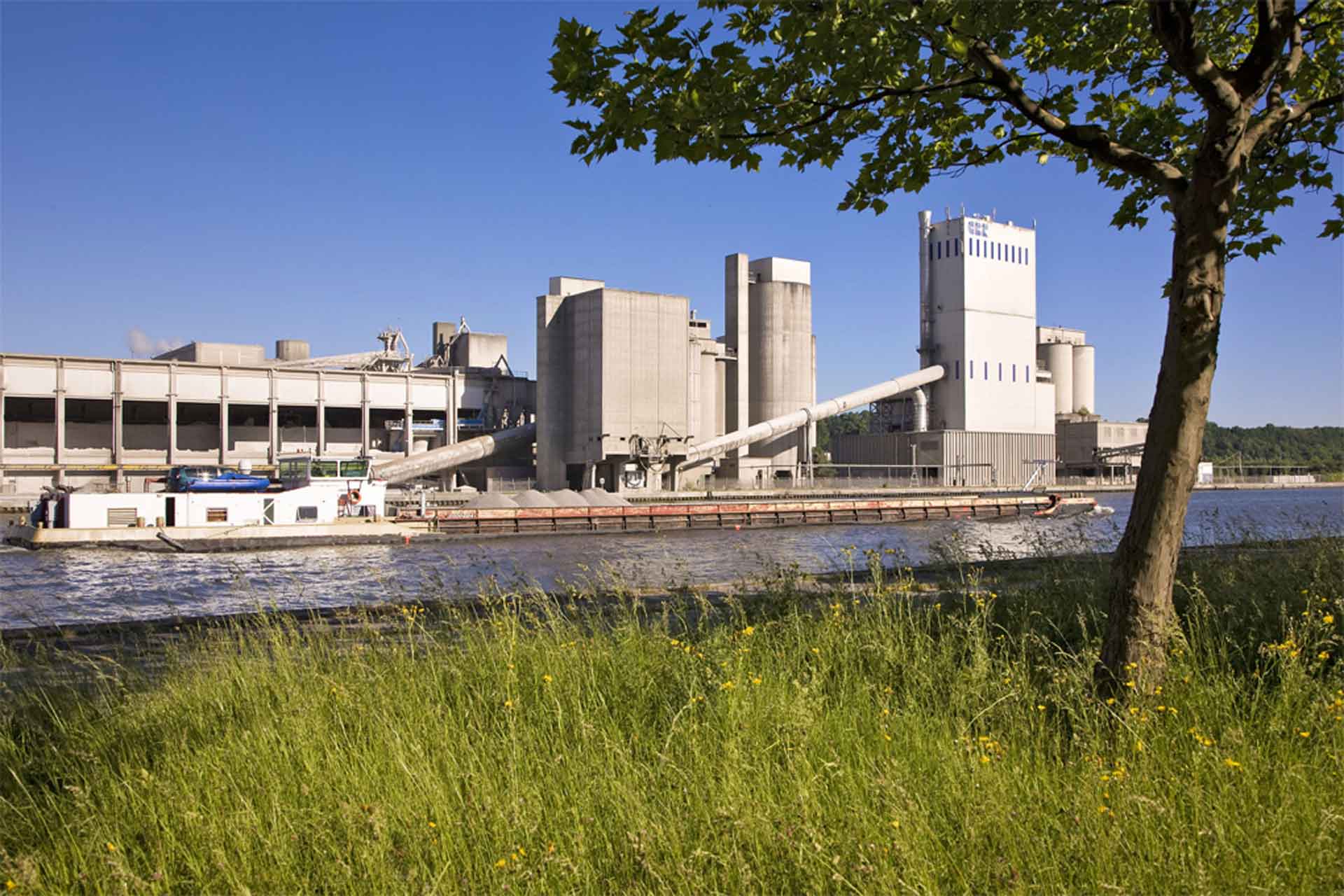Lixhe Cement Plant, Belgium
Breakthrough technology for carbon capture
HeidelbergCement plant Lixhe at the center of the research project
On 21 April 2016, the LEILAC (Low Emissions Intensity Lime And Cement) consortium, to which HeidelbergCement belongs, has announced a promising project regarding sustainable cement production: over the next five years, a cutting-edge testing facility is to be set up to rigorously assess new technology for the capture of CO₂.
The project is taking place under the auspices of LEILAC (Low Emissions Intensity Lime and Cement).
The research consortium includes HeidelbergCement, the Australian technology company Calix and other cement and lime producers, as well as research and development institutions. CALIX entered the market two years ago with a reactor used to directly separate CO₂ from magnesium minerals. Now, the same technology is to be used to capture the CO₂ produced by the cement manufacturing process, two-thirds of which come as emissions from the burning (calcination) of limestone. The temperature necessary to drive out CO₂ from limestone, however, is significantly higher than needed for magnesium. Therefore, the Calix technology must be further engineered and intensively tested in the field.
A unique system
The opportunities this technology will open up are tremendous: Integrated into the calcination process, the Calix reactor is capable of capturing almost pure CO₂ released from the limestone. The system is unique in that the heat of the exhaust gases is transferred to the limestone via a special steel vessel. In this way, the reactor is heated indirectly, with the gas never coming into contact with the limestone. The CO₂ released from the limestone can therefore be separated in an almost pure form. This technology offers an added benefit, as it can capture these emissions without significant energy or capital expenditures.
The project at Lixhe plant will run for the next five years. During the first three years, the project will focus on finalising the design of the demonstration plant, to be constructed at the HeidelbergCement plant in Lixhe, Belgium once the necessary permits have been secured. The pilot unit will then undergo two years of extensive testing in a standard operational environment.
The project has been awarded €12 million in funding from the EU as part of Horizon 2020, an EU research and innovation programme.
Find out more about LEILAC on the website
HeidelbergCement’ commitment to carbon abatement
The CALIX technology is not the first, or only, process being explored by HeidelbergCement in the pursuit of the most effective methods to reduce CO₂ emissions.
As a member of the European Cement Research Academy (ECRA),
HeidelbergCement is also engaged in developing an oxyfuel kiln, which recirculates exhaust gases to the burner, while pure oxygen is added to keep combustion effective. As a result, the percentage of CO₂ in the exhaust gas rises to 70% or higher. Oxyfuel can also be used in combination with the CALIX technology. Should this prove successful, it will enable 100% of all CO₂ produced from a cement plant to be efficiently captured.
Downloads

Calix demonstration plant at Bachhus Marsh, Australia.

Calix reactor integrated into the calcination process.

Calix demonstration plant at Bachhus Marsh, Australia.

Calix reactor integrated into the calcination process.


